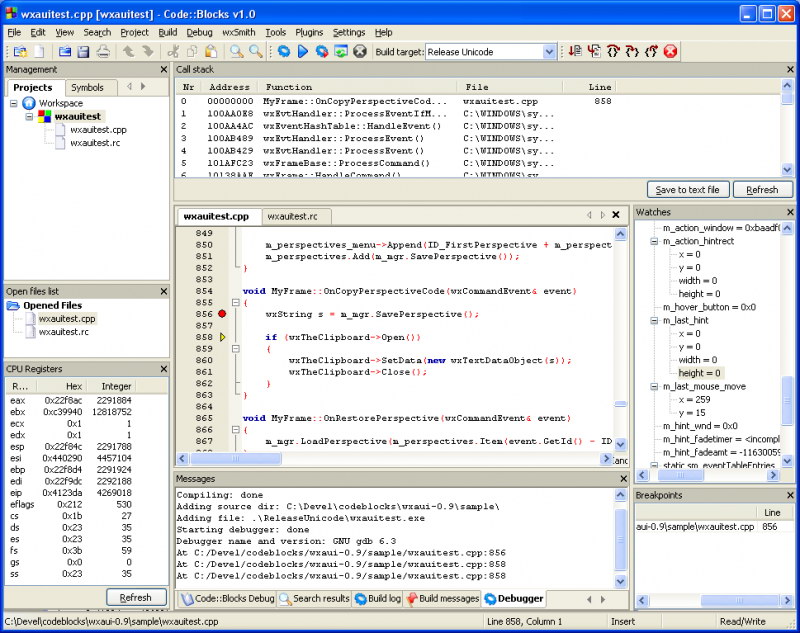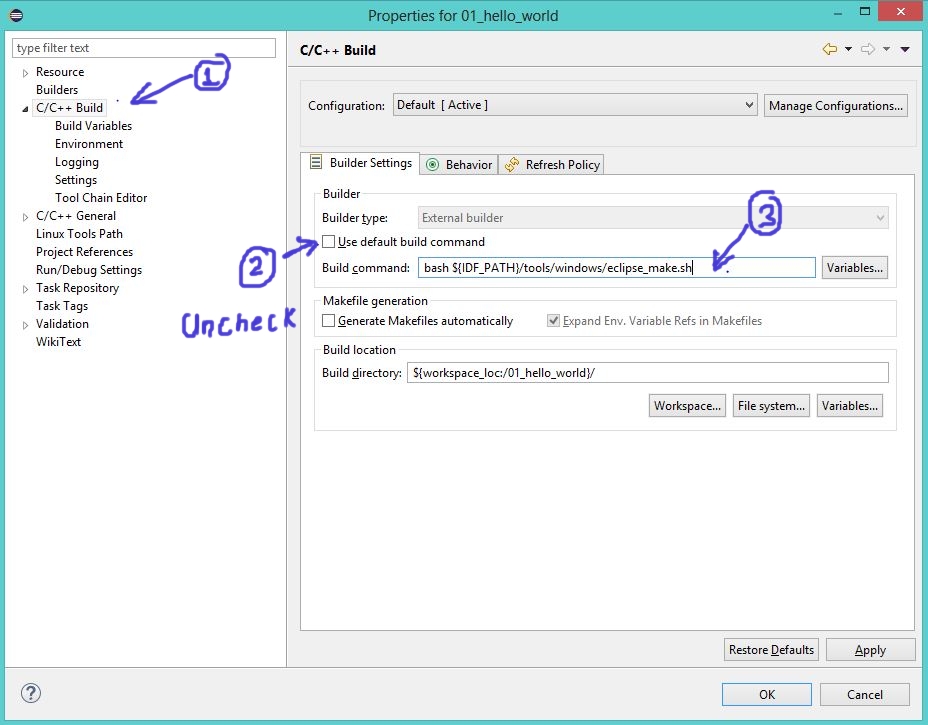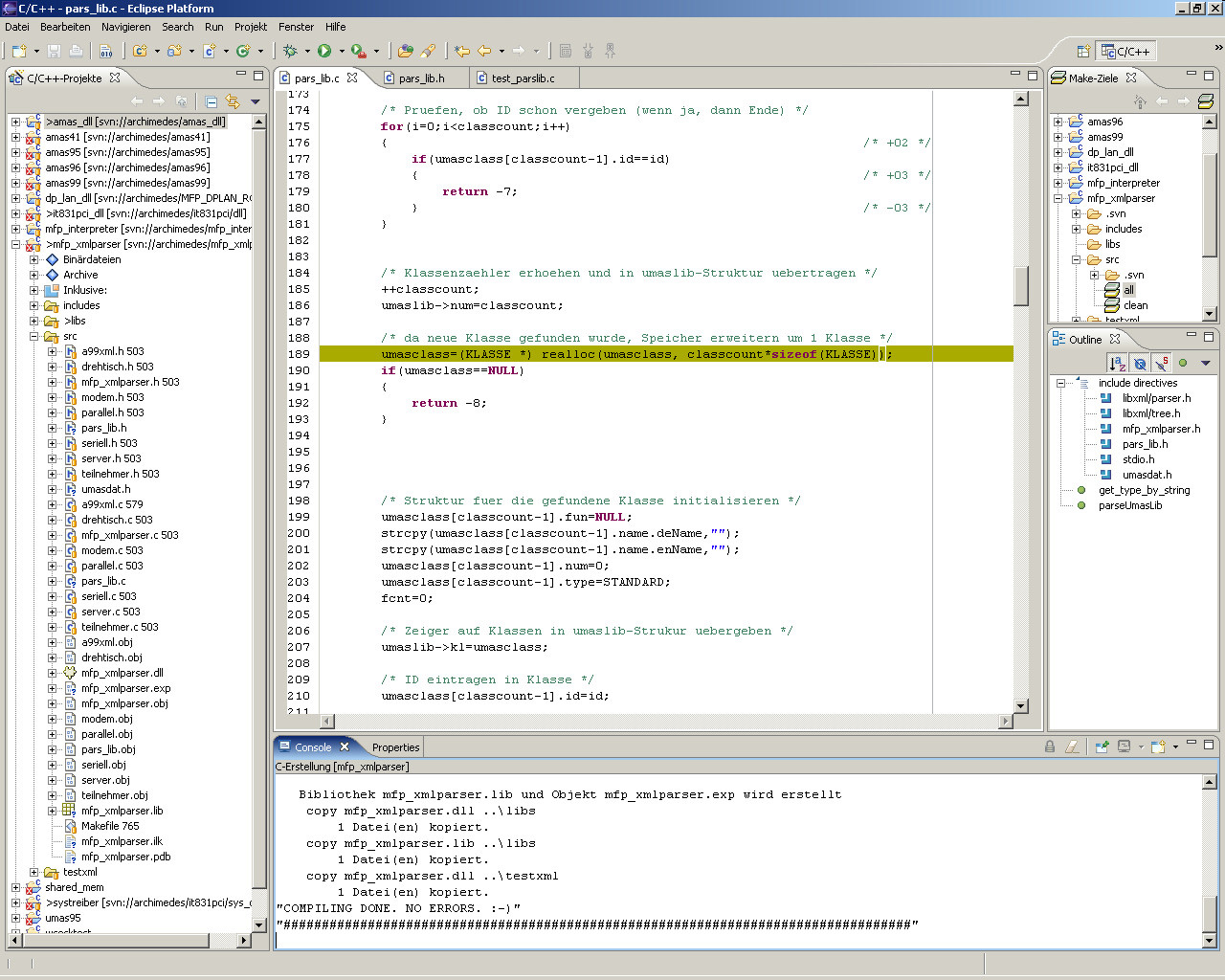How to Install Eclipse C/C Development Tool (CDT) 8.1.2 for Eclipse 4.2.2 (Juno) Step 0: Install. Work anywhere thanks to Eclipse’s cloud-based feature that shares your projects to the cloud. Developed in Java with its main focus being Java, you’re able to code in a variety of languages such as Ada, C, C, COBOL, Fortran, D, JavaScript, Groovy, Erlang, Haskell, Julia, Lau, Lasso, Python, Ruby, and many more languages thanks to the multitude of plugins available. The CDT Project provides a fully functional C and C Integrated Development Environment based on the Eclipse platform. Features include: support for project creation and managed build for various toolchains, standard make build, source navigation, various source knowledge tools, such as type hierarchy, call graph, include browser, macro definition browser, code editor with syntax highlighting. Using Eclipse on Mac (3.6.1) the parameter name is 'Auto activation triggers for Java' – ninjaPixel Jun 18 '11 at 21:58 4 Everything worked but now I get some very irritating behavior: suppose I want to type 'private int counter;' I start with private and the autocomplete kicks in with some suggestions (the firt is PrivateCredentialPermission).
- Related Questions & Answers

- Selected Reading

Step 1 − Install MinGW GCC or Cygwin GCC
To use Eclipse for C/C++ programming, you need a C/C++ compiler. On Windows, you could install either MinGW GCC or Cygwin GCC. Choose MinGW if you are not sure, because MinGW is lighter and easier to install, but has fewer features.
MinGW GCC
To install MinGW, go to the MinGW homepage, www.mingw.org, and follow the link to the MinGW download page. Download the latest version of the MinGW installation program which should be named MinGW <version>.exe.
While installing MinGW, at a minimum, you must install gcc-core, gcc-g++, binutils, and the MinGW runtime, but you may wish to install more.
Add the bin subdirectory of your MinGW installation to your PATH environment variable so that you can specify these tools on the command line by their simple names.
Step 2− Install Eclipse C/C++ Development Tool (CDT)
Two ways to install CDT, depending on whether you have previously installed an Eclipse:


If you have already installed 'Eclipse for Java Developers' or other Eclipse packages, you could install the CDT plug-in as follows:
Launch Eclipse → Help → Install New Software → In 'Work with' field, pull down the drop-down menu and select 'Kepler - http://download.eclipse.org/releases/kepler' (or juno for Eclipse 4.2; or helios for Eclipse 3.7).
In 'Name' box, expand 'Programming Language' node ⇒ Check 'C/C++ Development Tools' ⇒ 'Next' ⇒ ... ⇒ 'Finish'.
Eclipse For Mac C
If you have not install any Eclipse package, you could download 'Eclipse IDE for C/C++ Developers' from http://www.eclipse.org/downloads, and unzip the downloaded file into a directory of your choice.
Step 3− Configuration
You do NOT need to do any configuration, as long as the Cygwin or MinGW binaries are included in the PATH environment variable. CDT searches the PATH to discover the C/C++ compilers.
Eclipse For Mac Download
Your eclipse is now ready to run C++. In order to test it, open Eclipse. Now choose File → New → Project → C/C++ project. In 'Toolchains' box, choose your compiler, e.g., 'Cygwin GCC' or 'MinGW GCC' ⇒ Next.
Create a new file and Write some C++ code in the file. Right-click the project and select Build Project. Finally, right-click the project and select run as and then Local C/C++ application. This should run your application.
If you face any difficulties in installing/running the project, please visit https://www3.ntu.edu.sg/home/ehchua/programming/howto/EclipseCpp_HowTo.html for much more detailed instructions.
